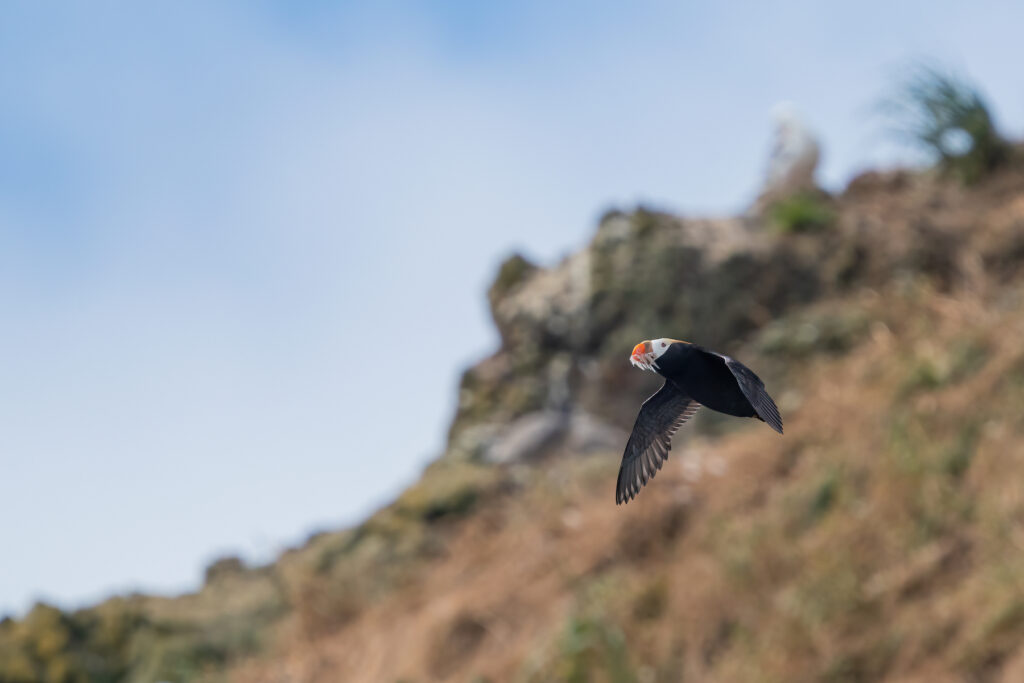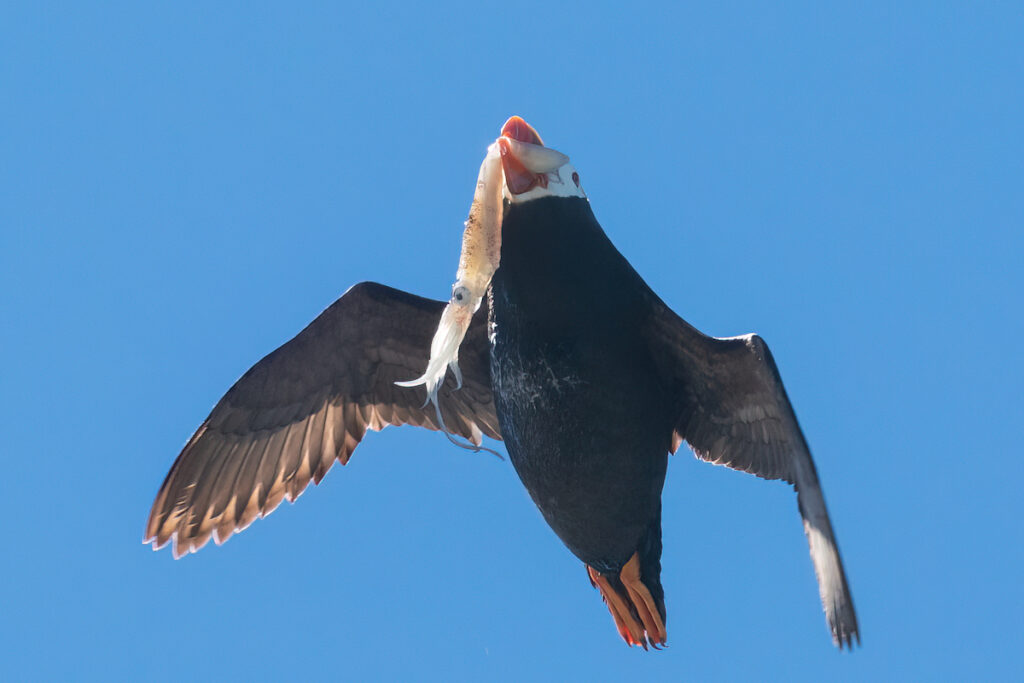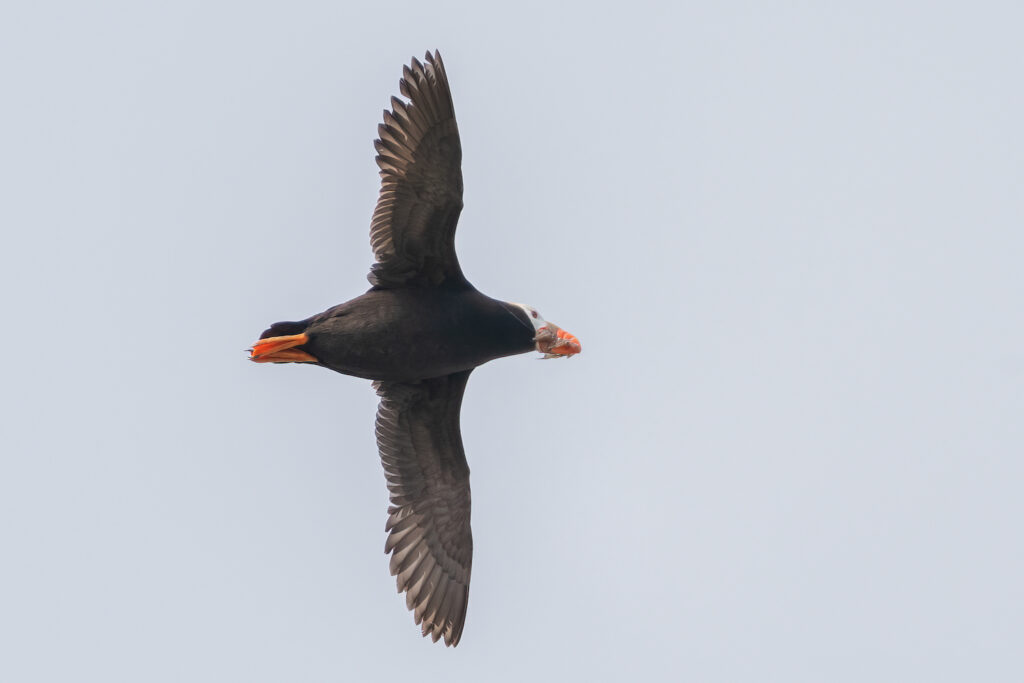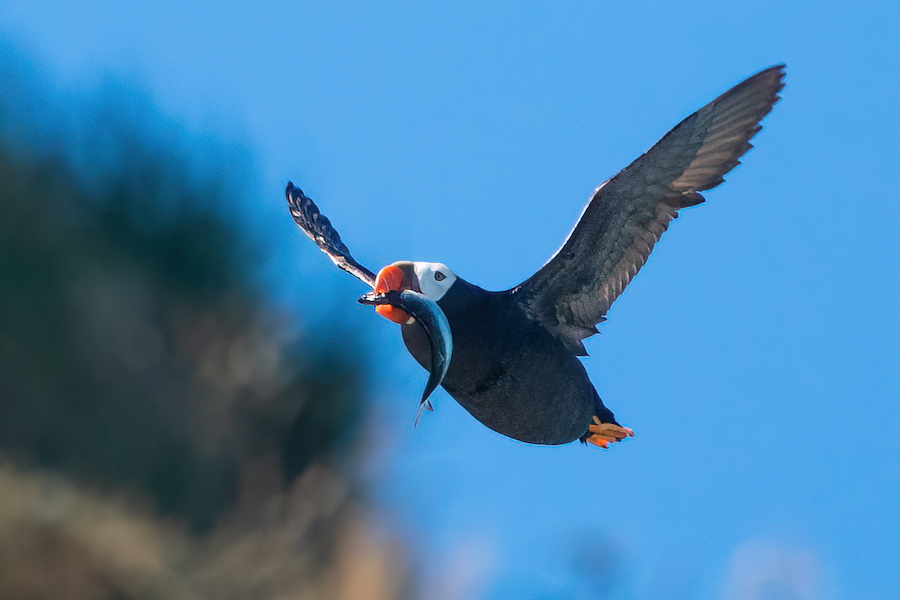By Sam Eberhard
The tufted puffins of Oregon are spread thin among the grassy-topped rock formations that are suitable locations for their burrows. Tufted puffin populations have plunged from above 5000 breeding birds to an estimated 500 breeding birds in 2021 (USFWS coast-wide survey). Understanding this drastic decline, and what prey are currently supporting the population, is imperative for the conservation of these unique alcids. Noah Dolinajec (OSU, FWCS PSMFWA graduate student) is aiming to provide the first comprehensive diet information on the composition of the bill loads from tufted puffins in Oregon. This information will help managers place tufted puffins into the context of the marine food webs they depend on.

Bill load studies often involve netting of birds as they return to their burrows, but while that may work for other locations, it would be hard to accomplish on the small and rugged off-shore sea stacks on the Oregon coast. Another less invasive option is photographing the bill loads of puffins – if there is an easily accessible location where birds can be observed.
In the summer of 2021, Noah spent days on Cannon Beach photographing bill loads of the breeding common murres and tufted puffins of Haystack Rock trialling the approach. It seemed promising, but a 300mm lens wasn’t enough. But, it was enough to plan for a second tufted puffin photography season at this iconic tourist destination.
This summer I (Sam Eberhard) was tasked with taking over the job of photographing bill loads at Haystack Rock. We got a modern mirrorless camera with great autofocus and paired it with some big glass (a 200-600mm zoom with a 1.4x teleconverter). As someone with both a passion for bird research and wildlife photography, I was hopeful that I could capture clear pictures of a large number of tufted puffin bill loads.


My first days at Haystack Rock I got a feel for how frequently the puffins would arrive with fish for their newly hatched chicks, and how to reliably pick them out of the nearly constant stream of common murres. This knowledge became something that I would often end up sharing with the many tourists on the beach who also were excited to spot tufted puffins.
Low tides allowed me to get closer to the 235 foot tall rock, but these low tides didn’t always coincide with the morning, which was when the puffins were most active and the light was best. I didn’t anticipate that I would be using my waders at Haystack, but they proved to be quite helpful in making the uncooperative tides manageable.



This year the tufted puffins attending the rock were in lower numbers than last year, a year that was by no means puffin-filled itself. My time on the beach was spent standing around and waiting for a black football furiously beating its wings to appear. Sometimes it would take up to an hour between puffin arrivals. That said, some days were relatively packed with puffin bill loads. My sixth day on the beach yielded 22 photos of tufted puffins with fish.
Some days seemed to have a combination of factors that aligned to lead to numerous bill loads, while many days the opposite seemed to occur. Of the 32 mornings on the beach I spent this summer, 13 days I photographed 1 or 0 puffins with fish. Two good mornings and a healthy collection average ones allowed me to assemble a data set of 139 bill load pictures this summer. Considering the puffin numbers this year, I think this result is encouraging for continuing this type of data collection.
I am incredibly happy that I was able to spend my summer on such an incredible project. I was able to combine two of my passions and contribute to the understanding of a very special species. It’s hard to imagine a better summer than that.



This project was funded by the Oregon Wildlife Foundation, Friends of Haystack Rock, and the OSU Marine Studies Initiative.
